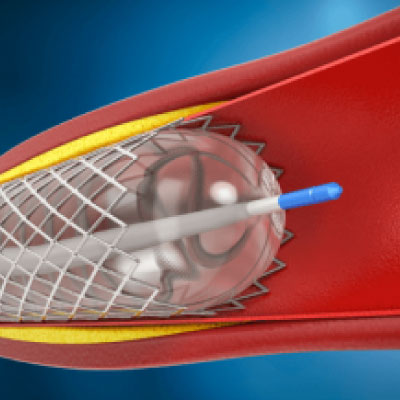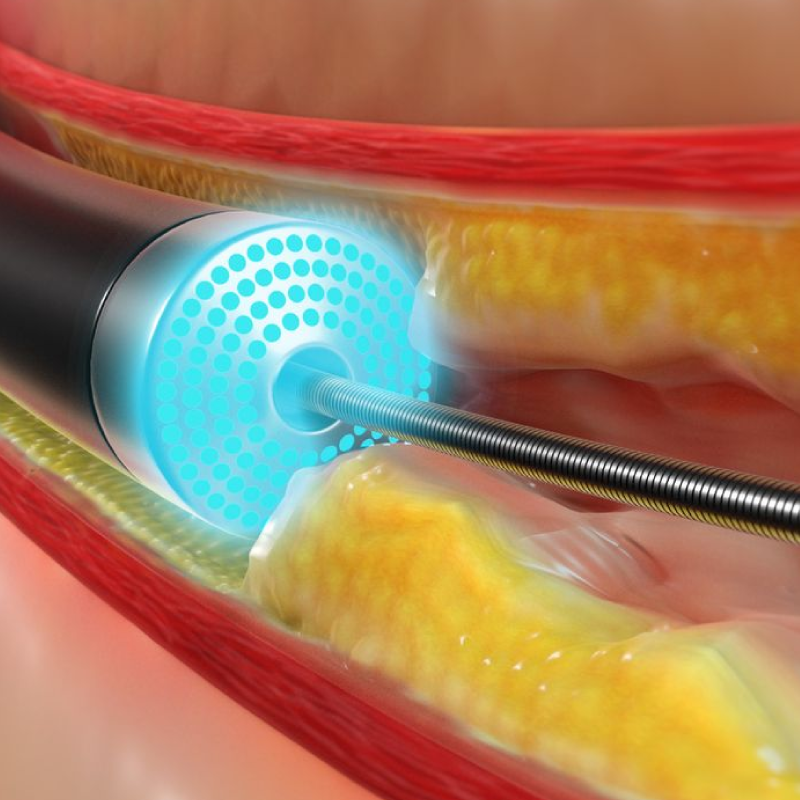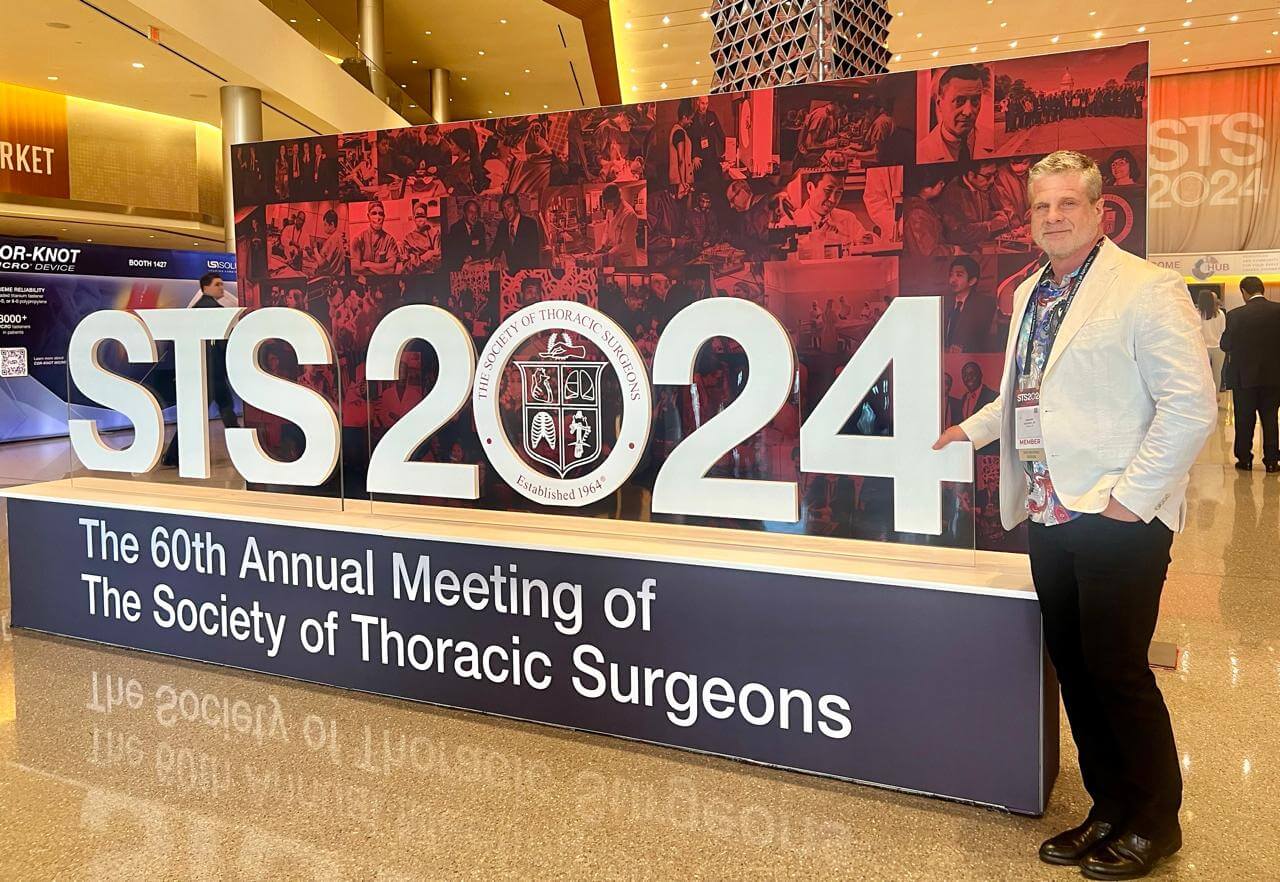Angio Suite
The Angio Suite at Messner Vascular Institute is a standalone state of the art fully equipped and dedicated Surgery Center that allows the patient to complete the entire perioperative process (preoperative, operative and post-operative stages) out-patient in the clinic versus a hospital setting. The completion of the entire process in one space maximizes efficiency, safety and decreases cost versus a traditional hospital setting which is important for patients with peripheral artery disease (PAD). Peripheral artery disease is the narrowing or blockage of the vessels that carry blood from the heart to the legs.
Benefits of using The Angio Suite for your procedure include:
- Use of the latest cutting-edge technology, Allura FD 20 Floor Mounted Phillips Complete Cardiovascular Imaging system in the hands of vascular experts who have performed thousands of arterial and venous procedures.
- A boutique outpatient experience with maximum comfort and amenities.
- Reduced wait times.
- Reduced infection risks.
- Decreased costs.
- No overnight hospital stays, you return home sooner than if your procedure is in a traditional hospital setting.
- Peace of mind of having access to nearby Medical City Healthcare or Baylor Scott & White Health Facilities.
- Private entry to a new modern facility with covered parking, valet parking available.
WATCH THE VIDEO BELOW FOR MORE INFORMATION ABOUT OUR ANGIO SUITE
*For informational purposes only. Like with any medical procedure, results will vary based on several factors. Please consult with your physician before undergoing a procedure.
Procedures Performed in the Angio Suite
Using advanced diagnostic and treatment imaging technology (Phillips Allura Xper FD 20) the vascular experts at Messner Vascular Institute perform minimally invasive, 3D image guided procedures including: angioplasty and stenting and atherectomy diagnostic imaging.
Angioplasty and Stenting
How do I know if I need an Angioplasty or a Stent Procedure?
You may be a candidate for angioplasty and stenting if you have moderate to severe narrowing in one or more of your arteries (atherosclerosis) caused by peripheral artery disease (PAD). The symptoms include pain in legs or feet, cramps in the legs or feet or wounds and sores that are difficult to heal with traditional methods. Each year over 160,000 amputations are performed because of PAD that is not recognized or treated early. More than 54% of patients were not assessed via diagnostic angiogram to determine if blood flow could be restored.
WHAT IS ANGIOPLASTY AND STENTING
Angioplasty is a procedure where a thin flexible tube is inserted inside an artery and guided to where the artery is narrowed, then a balloon is inflated to open the vessel. After the balloon is used, a mesh frame called a stent will be placed in the vessel to support the walls if necessary to prevent the artery from reclosing.

WHAT ARE THE BENEFITS
The benefit of angioplasty and stenting are to restore more normal blood flow to the affected area by reducing the narrowing in the artery and if needed, a stent can keep the artery from closing again. Most patients can return to normal activities shortly after the procedure and can drive the next day. The risks of a major complication are rare, but it is important to discuss all risks, benefits and alternatives with your doctor before the procedure. Since general anesthesia is not used and the procedure is minimally invasive, a hospital stay is not usually required, and recovery is quick, and most patients go home and use only Tylenol or Motrin for discomfort after.
Laser Atherectomy
What is athrectomy
Atherectomy is a minimally invasive technique for removing plaque from arteries in the body. Dr Messner uses laser atherectomy which is an FDA approved minimally invasive technique in which a catheter that emits high energy ultraviolet light is used to remove the plaque from the blocked or narrowed artery. Good candidates for atherectomy have significant narrowing of the arteries caused by conditions such as Diabetes Mellitus, Hypertension, High Cholesterol, effects of smoking and patients with non-healing wounds.
LASER ATHERECTOMY
Laser atherectomy is an FDA approved method for removing plaque from inside the arteries in a minimally invasive fashion. The laser emits a high energy ultraviolet light that dissolves the plaque unblocking the artery. There are more than 3,000,000 cases of PAD in the US per year. Since this disease has become so common vascular surgeons like Dr Messner are using new techniques such as laser, ultrasound or mechanical atherectomy to treat this disease in minimally invasive procedures rather than standard open bypass procedures and angioplasty and stenting commonly performed by other vascular specialists. Dr Messner offers newer alternatives such as laser atherectomy to treat patients. Major complications are not common. However, as with any procedure, it is important to discuss all risks with your doctor.
Since the procedure is minimally invasive and utilizes only local anesthesia, a hospital stay is usually not required, and recovery is relatively simple.

HOW IS LASER ATHERECTOMY PERFORMED?
Dr Messner uses the Excimer Laser in the process of photoablation which is the removal of plaque and other deposits that build up inside the wall of the arteries. He then guides a catheter through the blood vessel and inflates a balloon for a short period of time to restore the blood flow through the arteries, to the muscles, tissue and organs that are downstream. After the blood flow is restored patients can resume an exercise program and once again walk without pain. This procedure allows wounds that were present for long periods of time to heal quicker and prevent the need for amputations.
WHAT ARE THE BENEFITS OF ATHERECTOMY
Atherectomy is a minimally invasive procedure that is performed in Dr Messner’s office and generally does not involve a hospital stay. Since general anesthesia is not used the recovery time is minimal. Due to the precision of the laser guided treatment coupled with traditional angioplasty the procedure is very effective in reopening arteries that were narrowed or occluded and provides long term, healthy blood flow to areas that were previously damaged.
Messner Gregory D.O., Articles
he Angio Suite at Messner Vascular Institute offers cutting-edge technology for minimally invasive vascular treatments. Patients at The Angio Suite at Messner Vascular Institute receive expert care, ensuring precision and optimal outcomes for vascular health. Angio Suite Diagnostic Excellence.
The Angio Suite at Messner Vascular Institute is known for its diagnostic excellence, offering advanced imaging technology for accurate vascular assessments. With Angio Suite diagnostic excellence, patients can trust that their vascular health is in expert hands, ensuring the best possible care.




